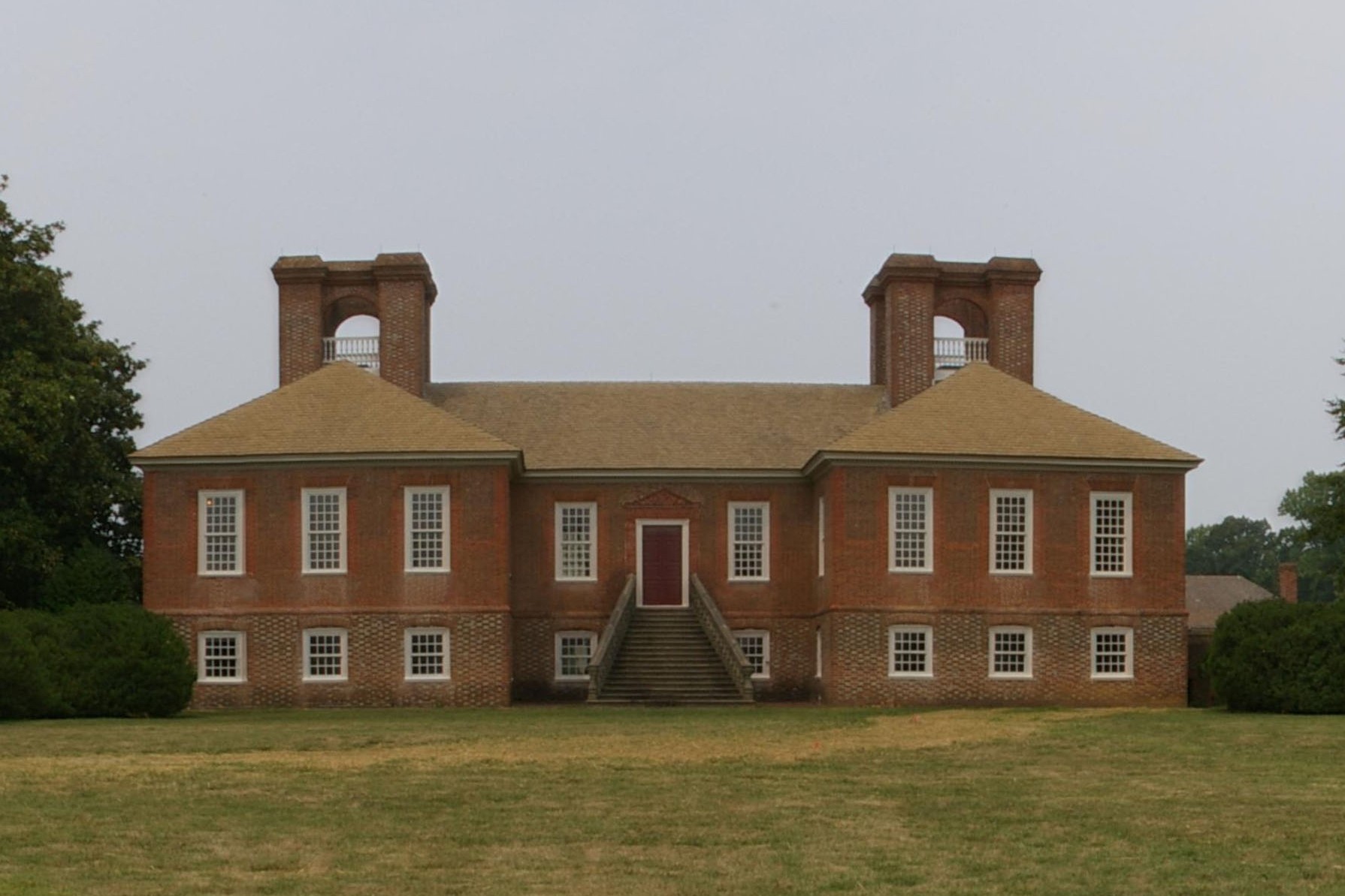|
Houma, Louisiana
Houma ( ) is the largest city in and the parish seat of Terrebonne Parish in the U.S. state of Louisiana. It is also the largest principal city of the Houma– Bayou Cane– Thibodaux metropolitan statistical area. The city's government was absorbed by the parish in 1984, which currently operates as the Terrebonne Parish Consolidated Government. The population was 33,727 at the 2010 census, an increase of 1,334 over the 2000 census tabulation of 32,393. In 2020, the population estimates program determined 32,467 people lived in the city. At the 2020 census, its population rebounded to 33,406. Many unincorporated areas are adjacent to the city of Houma. The largest, Bayou Cane, is an urbanized area commonly referred to by locals as being part of Houma, but it is not included in the city's census counts, and is a separate census-designated place. If the populations of the urbanized census-designated places were included with that of the city of Houma, the total wou ... [...More Info...] [...Related Items...] OR: [Wikipedia] [Google] [Baidu] |
City
A city is a human settlement of a substantial size. The term "city" has different meanings around the world and in some places the settlement can be very small. Even where the term is limited to larger settlements, there is no universally agreed definition of the lower boundary for their size. In a narrower sense, a city can be defined as a permanent and Urban density, densely populated place with administratively defined boundaries whose members work primarily on non-agricultural tasks. Cities generally have extensive systems for housing, transportation, sanitation, Public utilities, utilities, land use, Manufacturing, production of goods, and communication. Their density facilitates interaction between people, government organisations, government organizations, and businesses, sometimes benefiting different parties in the process, such as improving the efficiency of goods and service distribution. Historically, city dwellers have been a small proportion of humanity overall, bu ... [...More Info...] [...Related Items...] OR: [Wikipedia] [Google] [Baidu] |
United States Geological Survey
The United States Geological Survey (USGS), founded as the Geological Survey, is an agency of the U.S. Department of the Interior whose work spans the disciplines of biology, geography, geology, and hydrology. The agency was founded on March 3, 1879, to study the landscape of the United States, its natural resources, and the natural hazards that threaten it. The agency also makes maps of planets and moons, based on data from U.S. space probes. The sole scientific agency of the U.S. Department of the Interior, USGS is a fact-finding research organization with no regulatory responsibility. It is headquartered in Reston, Virginia, with major offices near Lakewood, Colorado; at the Denver Federal Center; and in NASA Research Park in California. In 2009, it employed about 8,670 people. The current motto of the USGS, in use since August 1997, is "science for a changing world". The agency's previous slogan, adopted on its hundredth anniversary, was "Earth Science in the Pub ... [...More Info...] [...Related Items...] OR: [Wikipedia] [Google] [Baidu] |
Hurricane Ida
Hurricane Ida was a deadly and extremely destructive tropical cyclone in 2021 that became the second-most damaging and intense hurricane to make landfall in the U.S. state of Louisiana on record, behind Hurricane Katrina in 2005. In terms of maximum sustained winds at landfall (), Ida tied 2020's Hurricane Laura and the 1856 Last Island hurricane as the strongest on record to hit Louisiana. The remnants of the storm also caused a Hurricane Ida tornado outbreak, tornado outbreak and catastrophic flooding across the Northeastern United States. The ninth tropical cyclone naming, named storm, fourth hurricane, and second Saffir-Simpson scale, major hurricane of the 2021 Atlantic hurricane season, Ida originated from a tropical wave in the Caribbean Sea on August 23. On August 26, the wave developed into a tropical depression, which organized further and became Tropical Storm Ida later that day, near Grand Cayman. Amid favorable conditions, Ida intensified into a hurricane ... [...More Info...] [...Related Items...] OR: [Wikipedia] [Google] [Baidu] |
Houma Today
''The Houma Courier'' is a newspaper published daily in Houma, Louisiana, United States, covering Terrebonne Parish. It is sometimes simply referred to as ''The Courier''. The paper was founded in 1878 as ''Le Courrier de Houma'' by French-born Lafayette Bernard Filhucan Bazet. It first published in four-page, half-French half-English editions. It was owned by Halifax Media Group until 2015, when In 2015, Halifax was acquired by GateHouse Media. GateHouse was later subsumed into . ''The Courier'' has a daily circulation of 19,700 and a Sunday circulation of 22,100. Its online edition, Houma Today, was launched i ... [...More Info...] [...Related Items...] OR: [Wikipedia] [Google] [Baidu] |
Antebellum Era
The ''Antebellum'' South era (from ) was a period in the history of the Southern United States that extended from the conclusion of the War of 1812 to the start of the American Civil War in 1861. This era was marked by the prevalent practice of slavery and the associated societal norms it cultivated. Over the course of this period, Southern leaders underwent a transformation in their perspective on slavery. Initially regarded as an awkward and temporary institution, it gradually evolved into a defended concept, with proponents arguing for its positive merits, while simultaneously vehemently opposing the burgeoning abolitionist movement. Society was stratified, inegalitarian, and perceived by immigrants as lacking in opportunities. Consequently, the manufacturing base lagged behind that of the non-slave states. Wealth inequality grew as the larger landholders took the greater share of the profits generated by enslaved persons, which also helped to entrench their power as a ... [...More Info...] [...Related Items...] OR: [Wikipedia] [Google] [Baidu] |
Plantations In The American South
Plantation complexes were common on agricultural plantations in the Southern United States from the 17th into the 20th century. The complex included everything from the main residence down to the Pen (enclosure), pens for livestock. Until the abolition of Slavery in the United States, slavery, such plantations were generally self-sufficient settlements that relied on the forced labor of enslaved people. Plantations are an important aspect of the history of the Southern United States, particularly before the American Civil War. The mild temperate climate, plentiful rainfall, and fertile soils of the Southeastern United States allowed the flourishing of large plantations, where large numbers of enslaved Africans were held captive and forced to produce crops to create wealth for a white elite. Today, as was also true in the past, there is a wide range of opinion as to what differentiated a plantation from a farm. Typically, the focus of a farm was subsistence agriculture. In cont ... [...More Info...] [...Related Items...] OR: [Wikipedia] [Google] [Baidu] |
Louisiana Purchase
The Louisiana Purchase () was the acquisition of the Louisiana (New France), territory of Louisiana by the United States from the French First Republic in 1803. This consisted of most of the land in the Mississippi River#Watershed, Mississippi River's drainage basin west of the river. In return for fifteen million dollars, or approximately eighteen dollars per square mile, the United States nominally acquired a total of now in the Central United States. However, France only controlled a small fraction of this area, most of which was inhabited by Native Americans in the United States, Native Americans; effectively, for the majority of the area, the United States bought the preemptive right to obtain Indian lands by treaty or by conquest, to the exclusion of other colonial powers. The Early modern France, Kingdom of France had controlled the Louisiana territory from 1682 until Louisiana (New Spain), it was ceded to Spanish Empire, Spain in 1762. In 1800, Napoleon, Napoleon Bona ... [...More Info...] [...Related Items...] OR: [Wikipedia] [Google] [Baidu] |
European Colonization Of The Americas
During the Age of Discovery, a large scale colonization of the Americas, involving a number of European countries, took place primarily between the late 15th century and the early 19th century. The Norse explored and colonized areas of Europe and the North Atlantic, colonizing Greenland and creating a short-term settlement near the northern tip of Newfoundland circa 1000 AD. However, due to its long duration and importance, the later colonization by the European colonial powers of the Americas, after Christopher Columbus’s voyages, is more well-known. During this time, the European colonial empires of Spain, Portugal, Great Britain, France, Russia, the Netherlands, Denmark, and Sweden began to explore and claim the Americas, its natural resources, and human capital, leading to the displacement, disestablishment, enslavement, and even genocide of the Indigenous peoples in the Americas, and the establishment of several settler colonial states. The rapid rate at which so ... [...More Info...] [...Related Items...] OR: [Wikipedia] [Google] [Baidu] |
Chitimacha
The Chitimacha ( ; or ) are an Indigenous people of the Southeastern Woodlands in Louisiana. They are a federally recognized tribe, the Chitimacha Tribe of Louisiana. The Chitimacha have an Indian reservation in St. Mary Parish near Charenton on Bayou Teche. Their reservation is a small part of their precontact territory. They are the only Louisiana tribe who still control some of their original land, where they have long occupied areas of the Atchafalaya Basin, "one of the richest inland estuaries on the continent."''NATIVE WATERS: A CHITIMACHA RECOLLECTION'' (1/30/2011) , American Public Television, Louisiana Public Broadcasting; accessed 20 September 2011 In 2011 they numbered about 1100 people. Historically, the Chitimacha spoke ... [...More Info...] [...Related Items...] OR: [Wikipedia] [Google] [Baidu] |
United Houma Nation
The United Houma Nation, Inc. is a state-recognized tribe and non-profit organization in Louisiana. It is one of the largest state-recognized tribes in the United States, with over 17,000 members. It is not a federally recognized American Indian tribe. Nonprofit The United Houma Nation incorporated as a 501(c)(3) nonprofit organization in Houma, Louisiana, in 1979. Lora Ann Chaisson is their chief. Their funders include the Ananda Fund, Common Counsel Foundation, Louisiana Endowment for the Humanities, NEO Philanthropy, and Institute of Indian Development. State recognition The state of Louisiana officially recognized the United Houma Nation in 1972. The Pointe-au-Chien Indian Tribe and the Bayou Lafourche Band of Biloxi-Chitimacha Confederation of Muskogees broke away from the United Houma Nation in the 1990s. They both became state-recognized by Louisiana in 2004; however, they are not federally recognized as Native American tribes. Federal recognition The United Hou ... [...More Info...] [...Related Items...] OR: [Wikipedia] [Google] [Baidu] |
Choctaw
The Choctaw ( ) people are one of the Indigenous peoples of the Southeastern Woodlands of the United States, originally based in what is now Louisiana, Mississippi and Alabama. The Choctaw language is a Western Muskogean language. Today, Choctaw people are enrolled in three federally recognized tribes: the Choctaw Nation of Oklahoma, Mississippi Band of Choctaw Indians, Jena Band of Choctaw Indians in Louisiana. Choctaw descendants are also members of other tribes. Etymology The Choctaw autonym is Chahta. "Choctaw" is an anglicized spelling. According to anthropologist John R. Swanton, the Choctaw derived their name from an early leader of the Choctaw people. Language The Choctaw language belongs to the Muskogean language family. The Choctaw language was well known among the American frontiersmen of the early 19th century. In 1870, a Christian Missionary and fluent Choctaw speaker Cyrus Byington published a Choctaw Dictionary ''Grammar of the Choctaw Language.'' Revi ... [...More Info...] [...Related Items...] OR: [Wikipedia] [Google] [Baidu] |







